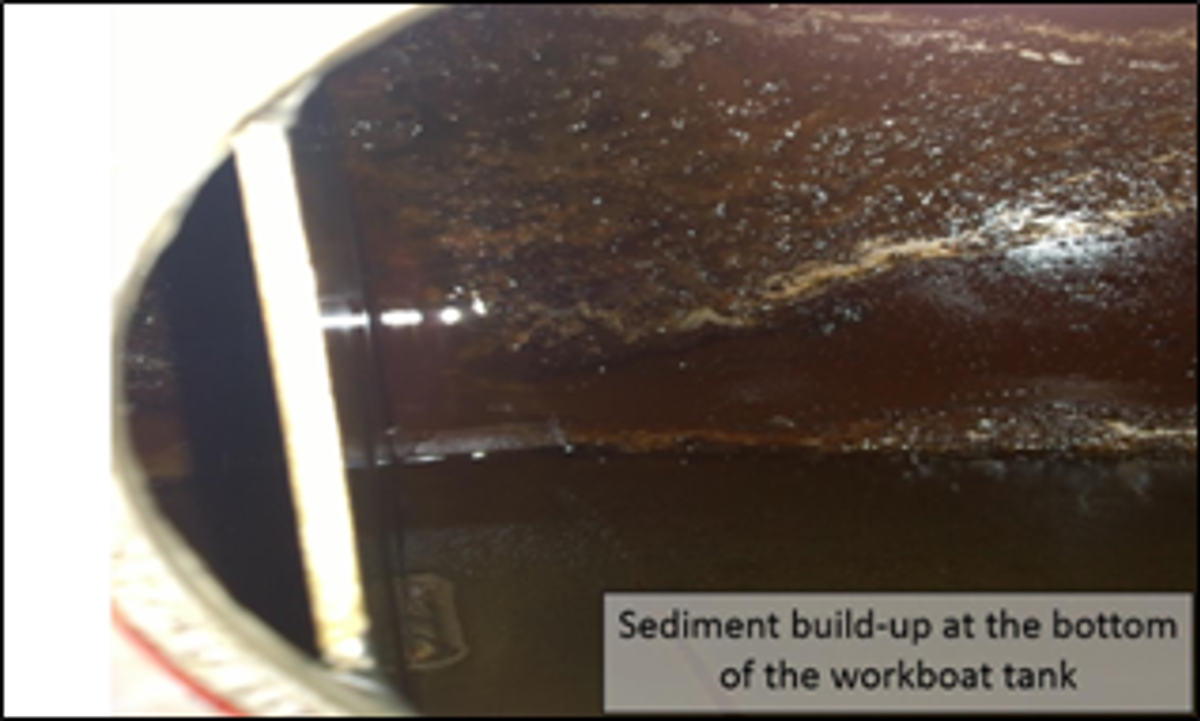Workboat Failed During Transfer Operations Due to Fuel Contamination
- Safety Flash
- Published on 19 March 2018
- Generated on 19 December 2025
- IMCA SF 06/18
- 2 minute read
Jump to:
The Marine Safety Forum (MSF) has published a Safety Alert regarding an incident in which a workboat’s engine cut out.
What happened?
The incident occurred during a crew transfer operation by workboat. The crew’s engineer made several unsuccessful attempts to restart the engine. The Coxswain made contact with the vessel Master and advised him of the situation. The vessel proceeded to attend and the workboat was safely recovered.

Sediment build-up at the bottom of the workboat tank
What went wrong? What were the causes?
Vessel engineers discovered that the fuel in the tank was contaminated due to water condensation causing a build-up of bacteria. The source of contamination was water or moisture in the tank due to condensation in the tank head space; this resulted in a build-up of bacteria turning into sediment. The sediment caused the fuel oil fine filter to clog preventing the engine from starting.
Planned maintenance system (PMS) instructions with respect to inspection and maintenance were clear, but had not been followed. The vessel did not hold spare filters on board.
What actions were taken? What lessons were learned?
- Check fuel and tank quality through planned maintenance inspections, treat and/or clean as applicable;
- Ensure workboat fuel tank levels are maintained to prevent condensation/water building up;
- Ensure a stock of essential fuel filters are held on board.
Related Safety Flashes
-
IMCA SF 31/17
15 December 2017
-
IMCA Safety Flashes summarise key safety matters and incidents, allowing lessons to be more easily learnt for the benefit of the entire offshore industry.
The effectiveness of the IMCA Safety Flash system depends on the industry sharing information and so avoiding repeat incidents. Incidents are classified according to IOGP's Life Saving Rules.
All information is anonymised or sanitised, as appropriate, and warnings for graphic content included where possible.
IMCA makes every effort to ensure both the accuracy and reliability of the information shared, but is not be liable for any guidance and/or recommendation and/or statement herein contained.
The information contained in this document does not fulfil or replace any individual's or Member's legal, regulatory or other duties or obligations in respect of their operations. Individuals and Members remain solely responsible for the safe, lawful and proper conduct of their operations.
Share your safety incidents with IMCA online. Sign-up to receive Safety Flashes straight to your email.